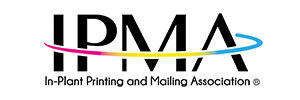As organizations look to streamline their print and mail operations, many are reevaluating software platforms and workflow solutions for their operation. The decision criteria to evaluate software solutions has shifted in response to many changes in the last two years. Technical resources are stretched thin – with staffing shortages and increased workloads to maintain security patches on servers and platforms. As senior leaders evaluate new solutions, there’s more weight put on the potential risk for maintaining homegrown software compared to the time and cost needed to implement purchased software options.

I recently spoke on the subject building vs buying software at the Xplor22 conference with IPMA partner, Mary Ann Rowan of Solimar Systems. Maintaining homegrown software has become more challenging. With outdated servers, lack of documentation, resignations and retirements among technical staff, many teams are looking for new options. There’s a willingness to purchase off the shelf software solutions that can be integrated and configured to address workflow challenges. Relying on industry specific software suppliers is now considered less risky than building and maintaining homegrown platforms.

Three to five years ago many print mail operations decided to stick with homegrown solutions as the price for standard software licensing was often deemed too expensive. Recently, organizations have found the cost and time needed for resources to maintain homegrown software is too much of a burden to their technical teams. In-house solutions require too many dedicated technical resources, too long to make enhancements, and add a significant risk in staying current with security updates and business changes.
Buying customizable and configurable software comes with support. Software companies provide professional services for customization and implementation. They provide training and often additional capabilities through modular options. Most importantly they provide resources and a logical path to update software and remain current with new capabilities and security requirements.
In my consulting role, I assist in-plant operations in evaluating their end-to-end workflow to determine how they can improve their workflow and identify risks in their current process. Often an assessment demonstrates that the single point of failure is staffing. When only one or two individuals know how a process works or understand how to make changes, it is a significant risk for failure. When there is a lack of documentation and tribal knowledge is how things get done, it is also a significant risk for failure. When key individuals resign or retire, back filling with similar skilled staff is very challenging.
What can you do today to mitigate risk?
Put together a cross functional team to evaluate your current state. Include staff from operations, IT, product development and key customers or lines of business.
- Document all of your current workflows
- Define responsibilities for each process/platform
- Define gaps in procedures and documentation
- Determine if there are security concerns
- Identify any islands of knowledge
- Document versions of software and servers
With the information collected and documented, you’ll be able to research solutions. You can leverage information and updates from your current suppliers. This type of assessment may demonstrate there is currently owned software that is underutilized, and vendor training is available. You can leverage knowledge and sharing among other IPMA members who may have addressed similar challenges. There are many software solutions and integration platforms that didn’t exist just a few years ago. With the research and analysis, the team can make recommendations to improve processes and mitigate risk factors.
Looking for a specific example? Watch how IPMA member Mike Lincoln and the team at The State of Colorado improved their workflow using off the shelf configurable solutions from Solimar Systems in this video.

Lois Ritarossi, CMC®, is the President of High Rock Strategies, a consulting firm focused on sales and marketing strategies, and business growth for firms in the print, mail and communication sectors. Lois brings her clients a cross functional skill set and strategic thinking with disciplines in business strategy, sales process, sales training, marketing, software implementation, inkjet transformation and workflow optimization. Lois has enabled clients to successfully launch new products and services with integrated sales and marketing strategies, and enabled sales teams to effectively win new business. You can reach Lois at https://www.highrockstrategies.com/ or Lritarossi@highrockstrategies.com
